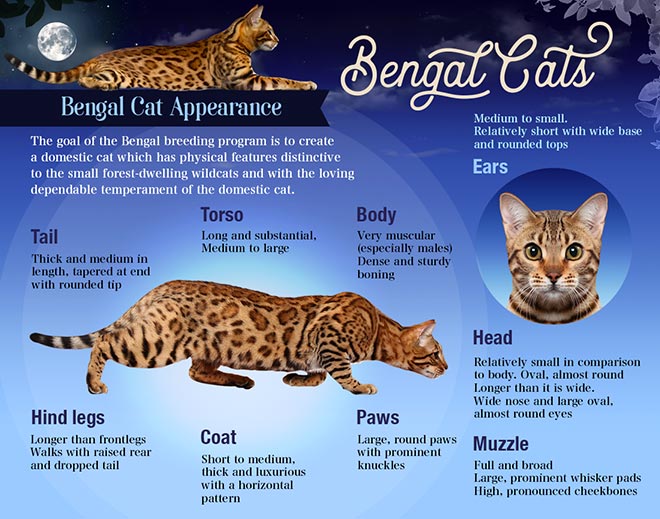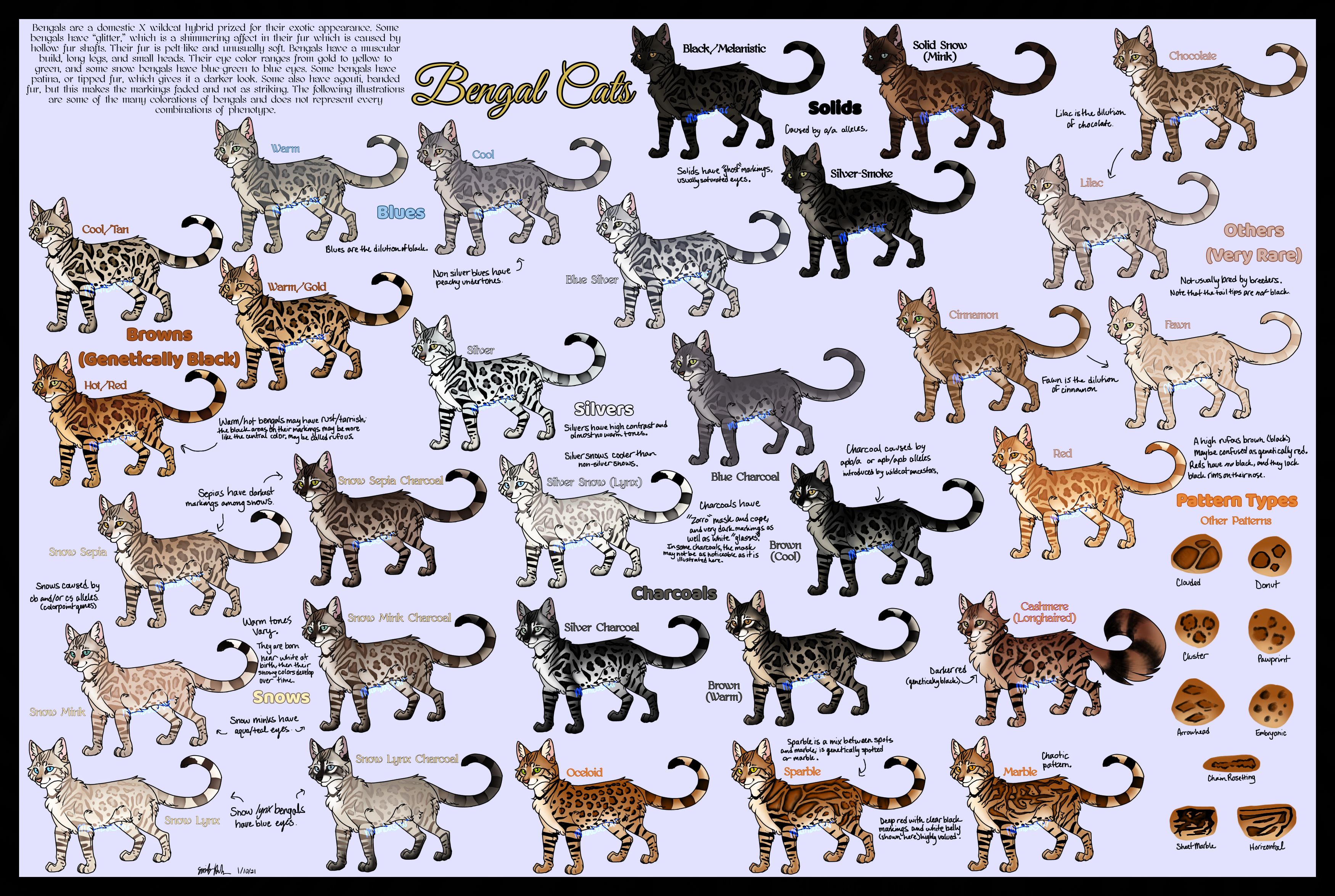
Bengal Cat Breed Standard Physical Traits According to TICA
Share
The Bengal cat, with its wild appearance and playful personality, has become a favorite among cat enthusiasts worldwide. To ensure the preservation of the breed's unique characteristics, organizations like The International Cat Association (TICA) have established rigorous breed standards. In this blog, we'll explore the physical traits outlined in TICA's Bengal cat breed standard, providing insight into what makes these felines stand out in the world of cat breeding.

Head and Ears:
According to TICA, the Bengal cat's head should be slightly longer than wide, with a broad, modified wedge shape. The profile should display a gentle curve from the forehead to the nose. Ears are medium to small in size, with a rounded tip, set relatively apart, and adorned with a distinctive "wild" appearance, often referred to as small lynx tips.
Eyes:
The eyes of a Bengal cat are one of its most captivating features. TICA standards dictate that the eyes should be large and expressive, set wide apart and slightly almond-shaped. The colors can range from gold to green, with a preference for a rich, deep hue that complements the coat color.
Profile & Nose:
Curve of the forehead should flow into the bridge of the nose with no break. Bridge of nose extends above the eyes; the line of the bridge extends to the nose tip, making a very slight, to nearly straight, concave curve. Nose should be large and wide; slightly puffed nose leather.
Neck and Body:
Bengals are known for their sleek and muscular build. TICA guidelines emphasize a long, substantial neck that flows seamlessly into a well-muscled body. The body should be medium to large, with a firm abdomen and a powerful, athletic appearance.
Coat:

The Bengal cat's coat is perhaps its most distinguishing feature. According to TICA standards, the coat should be short, dense, and luxurious to the touch. The accepted patterns include spotted and marbled, each contributing to the breed's wild aesthetic. The spots should be large, well-defined, and evenly distributed, while marbling should display a horizontally flowing pattern.
Color:
TICA recognizes various colors within the Bengal breed, including brown, silver, and snow. Brown Bengals should have a warm, golden background with dark brown to black spots. Silver Bengals exhibit a silver-white background with dark spots, creating a striking contrast. Snow Bengals come in three color variations: Seal Lynx Point, Seal Mink, and Seal Sepia, each with its unique coloration.

Related Blog: (link)
Legs and Paws:

Bengal cats have sturdy legs that are proportionate to the body. The hind legs are slightly longer than the front, contributing to their agile and athletic movement. The paws are medium in size, with distinctive, rounded toes and dark paw pads.
Tail:
The Bengal cat's tail is another feature that adds to its wild allure. According to TICA standards, the tail should be of medium length, thick, and tapered at the end. The tail should be evenly spotted or marbled, matching the pattern on the body.

In adhering to TICA's Bengal cat breed standard, breeders strive to maintain the distinctive physical traits that define this captivating breed. From the unique head and ear shape to the luxurious coat patterns and expressive eyes, each element contributes to the Bengal cat's exceptional beauty and charm. As enthusiasts and breeders alike adhere to these standards, the Bengal cat continues to be a living testament to the harmonious blend of wild aesthetics and domestic temperament.
Feel free to reach out to us if you have any questions on adopting one of our most beautiful Bengal kittens.
- Pawtopia Bengal Cat Breeder in Ontario, Canada.
